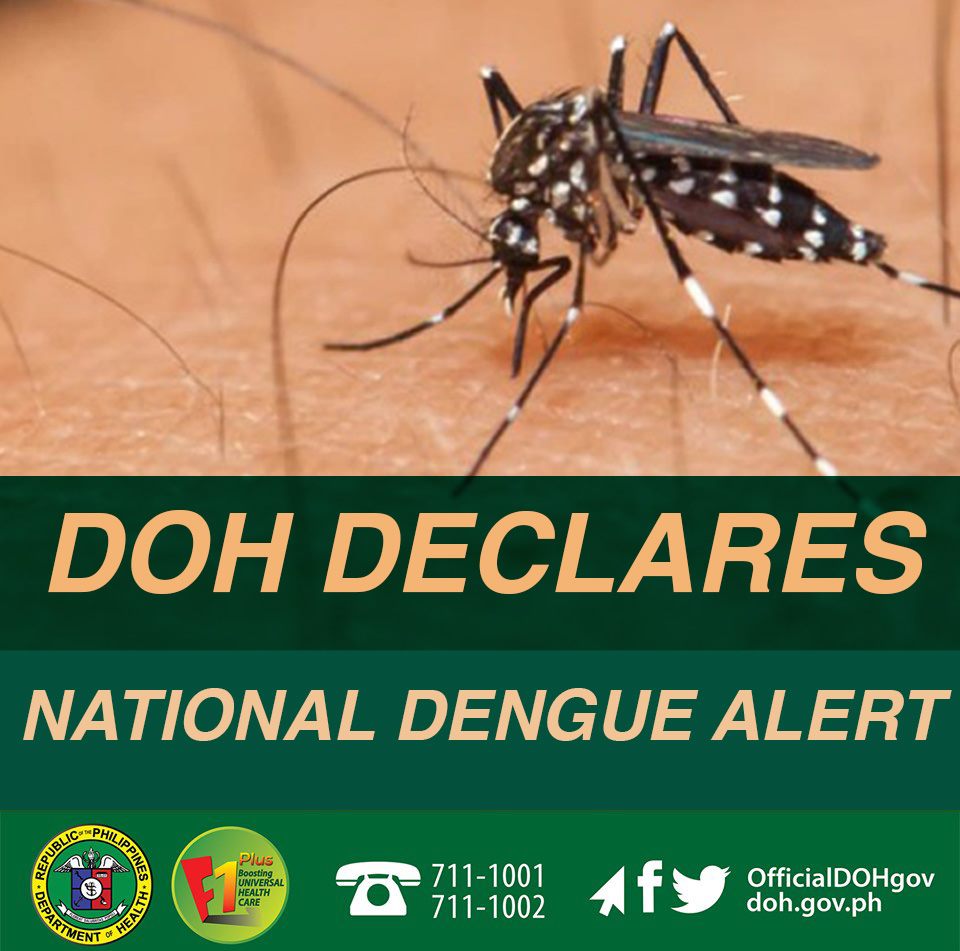National Dengue Alert: Beyond the Numbers

DENGUE CASES are on the rise. The Department of Health (DOH) said there have been 106,630 dengue cases nationwide from January 1 to June 29, 2019. Media reports noted that the number is 85 percent more than the 57,564 cases in the same period last year.
The spike in the number of dengue cases prompted the health department to announce a national dengue alert on July 15. The announcement, Health Secretary Francisco Duque III said, was meant to “raise awareness among the public” especially in communities where “signs of early dengue increases are evident.” Duque, however, assured the nation that there is no national epidemic, the cases being only at the local level.
According to the World Health Organization (WHO), an epidemic occurs when cases of an illness or health-related events in a community or region are observed to be “in excess of normal expectancy.”
Dengue is a disease carried by female Aedes aegypti mosquitoes that thrive in tropical and subtropical countries like the Philippines. The dengue virus has four strains, which means a person can be infected with the disease several times. The WHO said there is no specific treatment for dengue.
The media quickly picked up the DOH’s announcement. Reporting the number of cases is important, but with its focus on the figures, the coverage missed exploring other aspects of the issue, such as whether government efforts to curb the disease are adequate, given the decision to suspend the application of the controversial vaccine, Dengvaxia.
CMFR reviewed reports by the broadsheets Manila Bulletin, the Philippine Daily Inquirer and The Philippine Star; the primetime newscasts (ABS-CBN 2’s TV Patrol, CNN Philippines’ News Night, GMA-7’s 24 Oras and TV5’s Aksyon); as well as selected news websites from July 15 to 22, 2019.
Emphasis on Statements, Numbers
The media reports noted the number of cases and casualties in the affected areas, with Western Visayas recording the most cases. Other regions, provinces and localities where a dengue outbreak has been declared were also mentioned in the coverage, together with tips on identifying symptoms of dengue, how to prevent it, and what to do about it if infected.
The reports relied on statements from health officials to explain the rise of dengue incidents. For instance, media quoted Duque’s explanation that a surge in dengue cases occurs every three to four years and that an increase was expected this year. The last recorded peak of dengue cases was in 2016, some reports noted.
Dr. Gundo Weiler, country representative of the WHO, said what’s happening in the Philippines is also happening in Cambodia, Malaysia, Singapore and Vietnam. Weiler added that the rise in dengue cases can be attributed to various factors, among them migration and climate change.
Later reports continued to track the rise of dengue cases, as well as the efforts of local government units to halt the spread of the disease. The calls to action by some lawmakers and local government officials were also noted.
What the media missed was the opportunity to analyze more the government’s response to the dengue threat. For example, if the surge in dengue cases was expected, what programs were put in place to keep the disease in check in the last three years and to mitigate the impact of the surge in the cycle of the disease? Neither did they ask what shared factors were common to affected areas.
In reporting the DOH’s response, the media coverage lacked the vigilance with which to inquire into the preventive measures that could have been undertaken earlier so as to lessen the impact of the surge; and review how much the different agencies coordinated their efforts, sharing information which could help in the preparation of local communities for disease prevention.
A Life and Death Problem, But…
Some reports did recall the Dengvaxia issue, the reporting on which had declined and which the media had failed to follow-up because of the absence of any government report on the issues raised by the controversy. News accounts barely provided any update on the cases being investigated by the Public Attorney’s Office and the DOH in order to clarify whether the vaccine had indeed caused the deaths of victims of the disease who had earlier been inoculated. The evidence gathered by experts should have led the agencies concerned to develop more appropriate protocols for the use of the vaccine.
The media seemed satisfied in merely citing DOH Usec. Eric Domingo who said the surge did not have anything to do with the Dengvaxia controversy. And yet the surge of dengue cases in Calabarzon, which was one of the pilot locations for the suspended dengue immunization program along with Central Luzon and the National Capital Region in 2016, should have alerted media to inquire on the correlation.
An Inquirer report on July 17 noted the views of some health workers in Western Visayas who said the surge in dengue cases could be partly due to a decline in the immunization among children following the Dengvaxia scare.
Dengue is a serious life-and-death public health problem. The news media have to cease being merely reactive and must examine the statistics and refer these to independent experts for analysis.
Given the surge in the number of dengue victims and fatalities, the official statements are disturbingly complacent. More information from other sources will help the public evaluate how well their health needs are being met by agencies assigned to do just that. The media must look into the government’s preparedness and the adequacy of its response to this public health issue so that official lapses can be remedied in time.
Leave a Reply